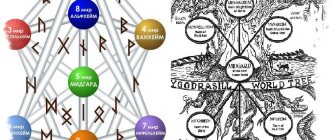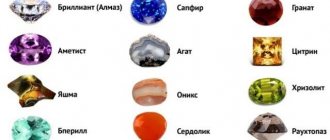Legends say that Dzi beads used to be jewelry of demigods and when they cracked, they threw them from heaven. In some areas of Tibet, Dzi with small cracks made from Dzi Stone is found and therefore especially valued.
Dzi beads are one of the most mysterious and powerful ancient personal talismans. There are a large number of varieties of dzi beads that bring different types of luck.
The exact time of origin, manufacture, and even the period during which they were an important part of Tibetan culture are unknown. It is only known that these solar stone beads, dotted with mystical patterns (eyes, stripes), are currently the most protected beads in the world. Today they are also sold in Russia.
The meaning of the word "dzi" in Tibet corresponds to the meaning of the words "radiance, brightness, clarity, brilliance."
Jewelry has always been given great importance in Tibet: it was used as a way to show the status of the owner, and also had great religious significance. Even the poorest families kept some types of beads as amulets.
It is believed that Dzi beads appeared at a time when there was a religion called Bon (Bon) - FAITH. This follows from the strange designs on the beads, which suggest thoughts of shamanism and real witchcraft. It is difficult to say anything for sure about Dzi, since Tibetan culture prohibits any archaeological expeditions on its soil. What is known is that they were used as amulets that increased strength.
The Dzi bead is part of a "family" of beads known as engraved beads. This ancient process of decorating chalcedony (a type of quartz) through chemical treatments that alter the surface composition originated in the Indus Valley Civilization and later spread to Iran.
Identifying “pure” Dzi among Dzi beads, that is, those that Tibetans would consider to be true examples of this type, is a very difficult task. Depending on the region of Tibet, the specifics of “pure” Dzi changes. In general, the Dzi bead is an engraved agate or chalcedony
with a certain pattern applied to it: circles (eyes), squares, waves and stripes. The most valuable bead is considered to be with eyes, especially the nine-eyed Dzi bead, since the number 9 was considered sacred in Bon times, although in Buddhism today it is not given such importance. Here a comparison arises - in Vedic culture, if I’m not mistaken, nine is also magical.
The beads were most often tubular, 1-2 inches long (sometimes longer), and seemed to shine, which is associated with good Dzi.
Found ancient Dzi are very expensive and very difficult to get. Most Tibetans value their Dzi because... this ensures their protection and can lead to failure if lost; beads are considered talismans and amulets. The ancient origin and the ban on archaeological excavations in Tibet have led to a huge demand for real ancient Dzi beads.
Dzi beads used in Tibetan medicine cost $5,000 per 1 gram.
Scientists have been discussing Dzi for many years, but there is not enough knowledge.
Etched or natural patterned agate or chalcedony beads, known in Tibet as Zi stones (Dzi beads), are used as protective amulets against all sorts of ailments, attacks, losses and misfortunes, spirit possession and negative planetary influences. Zi stones (Dzi beads) are worn as jewelry on the neck one stone at a time, or in necklaces, and also in the form of a cabachon to decorate statues of deities. In general, Zi stones are classified into two main varieties: cylindrical brown (or black) with white stripes or eyes (Tibetan mig) and round chalcedony or carnelian with a spiral pattern in ocher, gold or silver. Stones are also divided by shape into female stones (thin and pointed) and male Zi stones - they are thick and barrel-shaped.
The most reliable time for the manufacture of the first chalcedony beads is 2700 BC. They were mainly found in the Mesopotamian and Indus civilization site of Lothal and Chanhu Daro. Another period for making these beads is from 550 BC to 200 AD. Such beads have been found mainly in Indian sites of the Subcontinent. The final production period was from 224 to 643 AD, and this happened in Iran.
Today, this type of art and craft has not disappeared - beads as engraved products, although not necessarily decorated with beads, were produced in the twentieth century. The exact method of making real beads is still unknown.
Tibetans believe that Dzi is jewelry of supernatural origin.
There are many different stories and legends surrounding them.
Their origin is associated with ancient times, when demigods wore them as jewelry. Whenever Dzi spoiled a little, it was thrown away. This explains why the beads have never been found in perfect condition.
.
It is also said that Dzi were once insects that lived like worms in the earth, but turned into stone upon contact with a human hand. The insect theory is widespread and is often used to explain why Dzi are often found together, forming a kind of “nest”. There is also a legend that even after the beads are unearthed, they continue to move for some time.
Dzi beads have a matte shine, not glossy. The best stones are opaque, without chips, with a deeply etched pattern, and a smooth, glossy patina. The Tibetan word "Zi" means smoothly polished or etched.
In the 20th century, the production of imitations of Zi stones of varying quality was established. Imitations are made from porcelain, plastic, horn and glass. Examples of excellent quality are made in Taiwan using the original thermal etching technique. These beautiful Taiwanese copies cost a lot of money, but real Dzi found in Tibet, especially those decorated with nine eyes and other rare patterns, sell for much more money.
Another legend from Western Tibet says that Dzi originated from a mountain near Rudok. In ancient times, they flowed down its slopes in streams. One day the evil woman glanced at the mountain, and the flow immediately stopped. Hence the characteristic black and white stripes on Dzi.
Dzi are mysterious and magical and can protect their owners from troubles, illnesses and bad moods. As an assumption - perhaps this is a legacy of previous civilizations about which we know nothing today?..
Dzi also have medicinal value. Traditional medicine in Tibet for the treatment of epilepsy uses powder obtained from undisturbed (not broken) Dzi, mixed with other magical substances, from which a pill is made for the sufferer. It is very important to use unbroken Dzi, because if the bead is broken, then its power has been used up for protection.
When deciphering the symbolism of Dzi beads, first of all, pay attention to the number of eyes (circles and ovals) present on the bead. It is believed that these symbols give the Dzi bead the greatest power.
The meaning of additional patterns, such as stripes, waves, diamonds, squares, etc. is also important. Each of these patterns has its own symbolic meaning and can greatly enhance the impact of the bead.
Reputation and fame
This 9-eye Dzi bead attracts the attention of the public and brings its owner great fame and popularity in society. With such fame and good reputation, the owner of the 9th eye Dzi bead is able to achieve material success and prosperity much more easily. The more popularity a person gains, the more material wealth he can get at his disposal.
It is this quality to attract success and fame of this Tibetan Dzi 9 eye bead that is so highly valued by everyone who strives to become a pop star and gain great popularity. In addition, strengthening one’s reputation is a very valuable quality both for political figures and for doing business in the business environment. Therefore, the nine-eyed Dzi bead is also suitable for representatives of these circles of society.
Historical data
If you believe the reviews of the owners, Dzi beads are endowed with incredible power. Perhaps such an aura developed around them due to the lack of at least some information. The ban on excavations and ancient origins took their toll. Beads have become unattainable and desirable for many. Finding real Dzi beads is incredibly difficult. Demand for them exceeds supply many times over. The lack of at least some documentary evidence has led to the fact that scientists have long been arguing about the beads.
It is believed that the most likely time of their manufacture from chalcedony is 2700 BC. e. Such items have been found in Mesopotamia. Beads were also made in 550 BC. e. and 200 AD. Most often they were found in India. But in Iran, beads were made from 224 to 643 AD. e. It is worth saying that this type of art has not completely disappeared. Beads were produced as engraved items even at the end of the twentieth century. The surprising fact is that the exact method of their production is unknown.
If you believe the data of historical chronicles and excavations, beads were also found and valued in Persia, Mesopotamia, and Ancient Egypt. In ancient documents there is a description of the case when Alexander the Great, during the plunder of the storerooms of the Persian kingdom, discovered and distributed about 700 thousand Dzi to his soldiers. Currently, beads are valued and used by people as amulets not only in China and Tibet, but also in Southeast Asia. According to experts, the beads are the oldest talismans that have survived to this day.
There is information that the oldest beads, which are over 2500 years old, consisted of 70% agate, 25% other minerals and 5% substances of extraterrestrial origin. Modern products have a simpler composition; they are made from carnelian and agate. According to reviews, Tibetan Dzi beads are considered valuable if they are made of agate. This is the opinion of the Tibetans themselves.
Dzi 9 virtues
In addition to the ability of the 9-eye Dzi bead to bring wide popularity to its owner, it has many more wonderful qualities. The 9 eyes of this bead symbolize the essence of all 9 planets of our solar system. The number “9” in Buddhism is the number of completeness and completeness.
It is believed that this Dzi brings all kinds of good luck to its owner and gives advantages in life, which are expressed in the following 9 virtues and abilities:
- Ability to achieve triumphant victories
- The ability to protect yourself, people and your business from possible adversity and dangers
- Gaining widespread fame and popularity among the public
- Gaining a sense of self-worth and nobility
- Compassion and mercy for people
- Gaining power, strength and power in society
- Authority and competence in the field in which a person works, achieving greater authority and leadership positions
- The ability to both self-control and good control and management of those people and enterprises that this person leads
- Achieving high reputation, fame and fame
As you can see from the above, the 9-eye Dzi bead is especially suitable for those people who strive to achieve fame, fame and great popularity among the public. These qualities, along with the ability to manage one’s affairs well, allow one to achieve a high position in society and a good level of income.
Ancient legends
There are many legends about the appearance of Dzi beads. One of them says that in ancient times the gods did not communicate with people, but various divine entities descended onto the earth. They had wings, so they appeared near villages and cities at night. Some people tried to catch them, but they failed. But one day, out of powerlessness and anger, a man threw a piece of dirt into the entity, at that moment it lost its purity and turned into a bead, on which only the image of the eyes remained. This is how the very first bead appeared on earth.
Another legend tells that demigods once had beads. They served them faithfully until they cracked. After that they were thrown away. Later, people found such beads and used them as amulets. Of course, they were all cracked and used, but it was believed that this was why they were valuable. Such talismans brought good luck.
Another belief says that beads are insects that turned to stone after contact with people. Many catch insects specifically to obtain such a powerful talisman.
Be that as it may, no one knows exactly where the Dzi beads came from. Reviews from the owners suggest that they have enormous magical power. Interestingly, this fact is confirmed by many researchers.
Dzi bead 9 eyes meaning and application
The 9-eyed Dzi bead is well suited for businessmen, political and public figures and cultural figures. It favors those who need a good image and high reputation. The 9 Eyes Dzi Bead is especially good for people in leadership positions, business owners and business managers, leaders of social movements and political parties.
It should be noted that wearing a nine-eyed Dzi bead does not grant success as if by magic. In order to “discover” these gifts of hers, one must make one’s own efforts. Dzi harmonizes and strengthens what we bring into the world. It serves as a kind of resonance and amplifier of our energy and helps us achieve much greater success than what we could achieve without its help.
- The 9-eye Dzi bead helps an entrepreneur find his strengths, discover good ideas for business and create a well-functioning, well-coordinated business mechanism that brings in good money.
- It helps a company employee quickly earn a good reputation and move up the career ladder.
- Singers and actors achieve the love and popularity of the public.
- Public figures gain trust, respect and visibility among the electorate.
But if a person himself does not make any effort to achieve his goal, then there are no qualities, no energy that needs to be strengthened and harmonized. Therefore, unfortunately, simply putting on 9 glazed Dzi and waking up successful and popular tomorrow will not work. You must first make your own efforts towards the goal, and the Tibetan talisman will help you.
Additional characteristics of 9 eyed Dzi beads
Wearing the 9th Dzi bead with the eyes helps its owner strengthen intellectual abilities and become wiser. This helps to avoid many difficulties and overcome emerging obstacles on the path to his fame, success and wealth. In addition, the protective functions of this Dzi allow businessmen to stay afloat in economic storms. Public figures will not lose their position in society. This Dzi also contributes to the physical survival of a person during disasters and accidents.
There is documented evidence of a certain “mystical power” of this Dzi, which allows one to survive in such incidents. So, during a plane crash in Nagoya on April 26, 1994, among the 7 survivors out of 271 people, there was one who had a nine-eyed Dzi bead. Therefore, this Tibetan bead is also good for protection from the dangers of this world and the vicissitudes of fate.
THE MOST INTERESTING ABOUT DZI BEADS
Dzi or Gzi beads are one of the most mysterious Tibetan talismans known today. The exact time of origin, manufacture, and even the period during which they were an important part of Tibetan culture are unknown. Some Tibetans say about 2500 years.
What is known is that these solar stone beads, dotted with magical patterns (eyes, stripes, geometry, symbols), are currently the most protected beads in the world.
The land with which they are connected, Tibet, is sacred in itself, it is the cradle of our civilization, the strongest and most important place of power on the planet. And stone jewelry was always given great importance there: they were used as a way to show the status of the owner, and also had great religious significance. Even the poorest families kept some types of beads as amulets.
Although Buddhism is now widespread in Tibetan lands, Dzi beads appeared at a time when there was a religion called Bon (BON or Bonpo) - faith. Strange designs on the beads suggest thoughts about shamanism and real witchcraft. It is difficult to say anything for sure about Dzi, since Tibetan culture prohibits any archaeological expeditions on its soil. It is only known that they were used as amulets, increasing vitality and giving the necessary...
Origin of Dzi beads
.
The origin of Dzi beads is surrounded by many myths. The Dzi bead is part of a "family" of beads known as engraved beads. This ancient process of decorating chalcedony (a kind of quartz) through chemical treatments that alter the surface composition originated in the Indus Valley Civilization and later spread to Iran.
Identifying “pure” Dzi beads among Dzi beads, that is, those that Tibetans would consider to be true examples of this type, is not always an easy task. Depending on the region of Tibet, the specifics of “pure” Dzi changes. However, in general, we can say that the Dzi bead is an engraved agate or chalcedony with a certain pattern applied to it: circles (eyes), squares, waves and stripes. The most valuable is the bead with eyes, especially the nine-eyed Dzi bead, since the number 9 was considered sacred during the Bon faith, although in Buddhism it is not given such importance..
The beads were most often tubular, 1-2 inches long (sometimes longer), and seemed to shine. Especially found Dzi are very expensive and very difficult to get. Tibetans value Dzi because... this ensures their protection and can lead to failure if lost. The ancient origin and the ban on archaeological excavations in Tibet have led to a huge demand for real Dzi beads, many times exceeding the supply. Scientists have debated them for many years due to the lack of documentary evidence.
The most reliable time for making the first beads from chalcedony (not Dzi) is 2700 BC. They were mainly found in the Mesopotamian and Indus civilization site of Lothal and Chanhu Daro. Another period for making these beads is from 550 BC to 200 AD. Such beads have been found mainly in Indian sites of the Subcontinent. The final manufacturing period was from 224 to 643 AD, and this happened in Iran. However, this type of art did not disappear - beads as engraved products, although not necessarily decorated with beads, were produced in the twentieth century. The exact method of making real beads is still unknown.
It should be noted that according to historical chronicles and excavations, Dzi beads were found and valued in Ancient Egypt, Mesopotamia and Persia. There are descriptions in which, during the plunder of the storerooms of the Persian kingdom, Alexander the Great discovered and distributed 700,000 Dzi to his soldiers. Now Dzi beads are valued and used as amulets not only in Tibet and China, but throughout Southeast Asia. Therefore, these, one of the most ancient talismans that have survived to this day, will arouse genuine interest among people for a long time.
There is information that in the most ancient beads, which are more than 2500 years old, the material was as follows: 70% AGATE, 25% OTHER MINERALS, 5% UNEARTHLY ORIGIN. Modern Dzi is made from AGATE “Eye of Heaven” and carnelian. Tibetans recognize only agate...
Stories about Dzi beads - beads from the sky. Myths and legends of the origin of Gzi or DZI
.
Residents of Tibet believe that Dzi is jewelry of supernatural origin. There are many different stories and legends surrounding Dzi..
The main most common version says that these are decorations left over from the pre-Buddhist civilization of the demigods Bonpo or BON or BONPO. The approximate time of this civilization is more than 4000 years ago. Their origin is associated with ancient times, when demigods wore them as jewelry. Whenever Dzi spoiled a little, it was thrown away. This explains why the beads have never been found in perfect condition. As soon as they fell to the ground, they immediately turned into insects..
There are several stories regarding Dzi as insects. They tell that once upon a time Dzi were insects that lived like worms in the earth, but turned into stone upon contact with a human hand. One story tells of a man who saw such an insect high in the mountains and threw his hat over it to catch it. When he took off his hat, the insect turned to stone. Sometimes Dzi insects were found in cattle excrement or the horns of killed animals. The insect theory is widespread and is often used to explain why Dzi are often found together, forming a kind of “nest”. There is also a legend that even after the beads are unearthed, they continue to move for some time.
Another legend from Western Tibet says that Dzi originated from a mountain near Rudok. In ancient times, they flowed down its slopes in streams. One day the evil woman glanced at the mountain, and the flow immediately stopped. Hence the characteristic black and white stripes on Dzi...
One of the modern stories about Dzi is also known, which has become a kind of “urban legend”. As a result of a car accident in Taipei, all passengers would have died if one of them had not had a Dzi bead with him. In a plane crash in Tokyo, all passengers on the plane died except one, who was wearing Dzi 9 eyes!.
All these stories confirm the belief that Dzi are magical and can protect their owners from troubles, illnesses and bad moods. Dzi also have medicinal value. Traditional medicine in Tibet for the treatment of serious illnesses uses powder obtained from undisturbed (not broken) Dzi belonging to the patient, mixed with other magical substances, from which a pill is made for the sufferer. It is very important to use unbroken Dzi, because if Dzi is broken, it means that its power has been spent for protection..
In different parts of Tibet there are different legends about the origin of DZI
.
1. Plankton from the Tethys Sea.
.
In very ancient times, on the land on which Tibet now stands, there was a vast inland sea known as the Tethys. DZIs were microscopic organisms drifting in the sea. In their original form, they were like mollusks and shells with fleshy bodies protected by a shell. They could move like clams. Later, as a result of a huge geological upheaval, the seabed was uplifted to become the Himalayas. The clams died, their flesh dried out, and their shells turned into DZI beads...
2. Meteorites from space.
.
Meteorites from space fell on the fields, were hardened and turned into DZI beads..
3. Snakes.
.
DZI can move like a snake. When they are found and touched with a hand or clothing, they stop moving and turn into DZI beads..
4. Insects that are found in fields and in the droppings of cattle and sheep..
.
The DZI lived deep underground, but geological movement eventually brought them to the surface of the earth. They were picked up by peasants during field work. There are also Tibetan nomads who look for DZI in the droppings of animals they graze in the meadows..
6. Fossilized insects, or crystallized fossils of the sacred Khyang bird.
.
7. Divine flying insects.
.
The llamas use their long sleeves to touch them, immediately then they solidify into DZI. Any man or woman can touch them with a hand, clothing or a stick. They will immediately harden in DZI..
8. Weapons of the Asuras.
.
Asuras belong to one of the six classes of beings on Earth. Their home is deep in the ocean, north of Mt. Sumera, the center of the Buddhist world. Asuras always act against Buddha Shakyamuni and do not listen to the words of the Buddha. Therefore, they are considered not gods, not divine and not human creatures with a warlike disposition and DZI are their weapons..
9. Gems of the gods.
.
Tibetans believe that DZIs are the gems of the gods, dropped into the human world when they become a little damaged. This explains why it is extremely difficult to find DZI in perfect condition..
10. DZIs come in treasures.
.
This legend circulates among Tibetans in the Kham region. One fine day, a man was herding yaks and accidentally discovered a treasure of beautiful DZIs in the mountain. Many DZIs were crawling in their “nest”. He tried to capture them all, but was unable to. He then ran back to his village to bring help. When he returned, with the exception of a few DZI, the rest managed to escape from the nest. They could not find the missing DZI, despite repeated attempts..
11. DZI from the stream in Ngari.
.
Legend claims that a stream of DZI flows continuously on a mountainside near Rutog in Ngari. One evil woman “with an evil eye” looked at the mountain and the flow of DZI immediately stopped. Therefore, the characteristic black and white stripes were obtained.
12. Magical gifts of Vajravaraha Buddha.
.
In the early years, when Tibet was hit by a severe epidemic, the Tibetans were plunged into an abyss of suffering and they led a very hard life. Fortunately, the compassionate Vajravarahi Buddha came to relieve them of their suffering, and magical DZIs fell from the sky. Everyone who was predestined was able to receive them and will be freed from illnesses, troubles and failures..
In Tibet, Dzi beads are most often worn with red coral, amber, carnelian, turquoise and silver.
.
These stones are the most ideal companions for Dzi. They remind them of home - Tibet. But don't be afraid to try other stones that you like and are partial to for your new Dzi beads. The owners of these beads are blessed and receive unexpected good fortune, happiness and perfection. Dzi are also unique for collecting..
Preservation and use of DZI beads.
.
The DZI BEADS should be worn on the pulse - on the inside of the wrist or on the jugular cavity, at the junction of the neck and shoulders. At least in the middle of the chest. In general, they were worn in those places where the physical manifestation of the chakra was located - the forehead (third eye), the jugular cavity (Vishuddha) and the center of the chest (Anahata).
.
.
His Holiness Dilgo Khyentse Rinpoche was one of the leading teachers of the pith teachings of Dzogchen (Great Perfection), one of the main lineage holders of the Nyingma school, and one of the greatest examples of adherence to a non-sectarian tradition in modern Tibetan Buddhism. He was a scholar-philosopher, sage, poet, and teacher of many eminent masters of all four schools of Tibetan Buddhism. (I wore a necklace with several Dzi on my neck)
.
Natalia Pravdina, Madonna, Sting do not part with Dzi beads and wear them all the time.
.
Several rules for using Dzi: .
1. Wear Dzi as often as you can. This allows them to process your body's energy and interact with your body's magnetic field.
2. If you have a lot of Dzi beads, store them on your home altar by making a convenient box for them and placing a soft cloth there. This shows them your appreciation for their care. Sometimes rub them lightly with your fingers to add warmth and brightness to them.
3. When you string Dzi yourself, do it carefully so as not to break them..
4. Before bathing, remove the Dzi and place them on the table or altar. Avoid getting Dzi's wet too often, otherwise they will break easily. In addition, dampness is harmful to Dzi..
5. Pay attention to your behavior. If you feel that what you are about to do may be disrespectful to the Dzi (alcohol, sex, stealing, lying), remove the Dzi for this time, otherwise they will absorb your negative unbalanced energy.
6. Don't let other people touch them without a good reason.
7. When participating in various spiritual activities (prayer, yoga, meditation, visiting places of power, seminars, initiations), be sure to wear your Dzi..
8. If the Dzi bead you are wearing is damaged during an accident, it needs to be replaced. Even if a piece breaks off, it can no longer be worn..
9. If you were at a funeral, in a cemetery, or were near a dead animal or person for a long time, you need to cleanse your Dzi..
10. Take care of your Dzi sincerely and do not doubt them. Then they will bring you all the benefits they promise!
It is recommended to remove the bead before going to bed. Dzi should be kept on a raised platform in a special place, separately from other decorations, preferably on the altar, thereby expressing your respect and respect to the bead.
Cleansing Dzi
.
If you bought Dzi or forgot to take off Dzi when needed, or you wore Dzi at a funeral, etc., then there are the following methods of cleansing:
- Clean the Dzi bead over the fire (candle). Swipe Dzi over the fire several times, on each side. Just quickly so that the bead does not get too hot.
- Keep it in the sun for half a day or a day.
- Hold in the smoke of traditional Tibetan, Nepalese natural incense or incense.
- Clean the Dzi with a mantra, for example OM or OM MANI PADME HUNG, after pronouncing the mantra you need to blow on the Dzi, 10-15 minutes is enough.
- Soak for 3 hours in very salty water, preferably with diluted sea salt.
- Rinse under running cold water for about 15-30 minutes.
But still, the last two methods are for extreme cases, because... dampness is harmful for Dzi beads and they should not be soaked in water often..
After these procedures, Dzi will be cleansed. You can also take Dzi to a Buddhist temple to charge and ask a monk to charge it. This can be done immediately after purchase or at any other time. Please remember to clean your Dzi regularly once every 1-2 months. In the process of ordinary life, each person releases a lot of negative energy, Dzi accumulates it. If you feel that a bracelet or pendant has become heavy, irritating, and you want to take it off - don’t tolerate it, just take it off and clean it right away..
Before putting on Dzi for the first time:
.
Press Dzi to your lips or forehead, tell her that you love her and will always love her, tell her that you will always be grateful to her. Try to give her love and gratitude REALLY at this moment. After this, make a wish directly into the bead, saying out loud your cherished wish, according to the theme of this particular Dzi. Say THANK YOU...and wear...
How do Dzi work?
.
Tibetans consider the Dzi bead to be the most precious stone, and this treasure is kept by the royal family from generation to generation. In Tibet, ancient pure Dzi beads can be used as collateral in banks or credit bureaus. Tibetans consider Dzi beads to be no different from money. Because they are small in size, easy to maintain and easy to carry, royalty and the rich will trade them for pets, lands, and simply use them instead of money. The Dzi bead is an important decoration in Tibetan adult life and marriage ceremonies. The quantity and quality of Dzi beads can reveal the wealth of a family. In addition, Dzi is also a precious medicinal ingredient in many Tibetan medical practices. Dzi is the most precious amulet of the Tibetans. It is believed that with the help of Dzi, one can remove the obstacle of karma, receive blessings, protection from diseases, protection from evil, increase vitality and luck, and increase wealth. Powerful Magnetic energies of Dzi enhance the cosmic and magnetic energy of nature. The magnetic energy and chi emitted by Dzi is very gentle and suitable for placement in any part of the human body. It helps regulate blood circulation and reduce diseases.
When Dzi saves the owner from some serious problem or danger, in disasters or attacks or accidents, Dzi breaks into several pieces or simply disappears from the arm or neck. It takes away all the negative charge and terrible consequences and disappears or breaks, despite the fact that often there is no physical impact on Dzi, that is, there is no blow, there is no physical contact of the Dzi bead with something that could damage it physically..
There is a real witness of how, in a moment of great stress and anger, a person’s Dzi on the bracelet split into 3 pieces, and the entire bracelet shattered, as if it had exploded from the inside..
If your Dzi bead splits, then it has exhausted its source of energy. It happens that during its operation, a bead accumulates so much negativity that it literally crumbles into small pieces before our eyes. This means that she took upon herself all the bad things that were directed at you. Thank her for the work she has done and say goodbye to her. After this, you can buy yourself a new similar bead.
One magician's opinion.
.
My personal opinion, as a person involved in magic, is this: the beads have a magical code, something similar to Kabbalistics, a certain effect is encrypted in the code. The code is applied to high-quality Agate with strong magnetic properties, the agate itself gives transformation as a powerful stone, and human energies passing through the Agate beads located on the pulse and through the image with the code constantly fuel the transformation. The process is absolutely understandable to anyone who knows how to make magical talismans that affect situations, health, a person’s inner world, etc. The interesting thing is that both ancient beads that are 2500 years old or more, those made 200 years ago, and modern ones work in this way! So strong, apparently, is precisely this code and the power of this type of Agate, which is called “Eye of Heaven” in Tibet. Beads WORK - tested on yourself!.
The meaning of Tibetan Dzi bead patterns
.
When deciphering the symbolism of Dzi beads, first of all, pay attention to the number of eyes (circles and ovals) present on it. It is believed that these symbols give the Dzi bead the greatest power. They also have stripes, waves, diamonds, squares, etc. Each of these patterns has its own symbolic meaning. In the Tibetan book on the secrets of medicine, Dzi beads are described as healers of diseases, in particular blood diseases, and protectors of a person from the bad intentions of enemies and from evil curses. Dzi will remove all obstacles so that a person will be protected from accidents, natural disasters, and accidental deaths, such as simply being in the wrong place at the wrong time. They bring good luck, good karma, happiness, long life and protection. The ancient and pure Dzi of Tibet are extremely valuable and rare. No matter how many or how few eyes are on them, all Dzi beads have mystical powers that bring good luck, ward off evil, stabilize blood pressure, protect against apoplexy and increase the strength of the body. Dzi is the most precious stone of Life for Tibetans.
.
The traditional Tibetan view of Dzi beads differs from the Chinese. Since ancient times, Tibetans have believed that DZI is a talisman of HAPPINESS, which cannot be divided into luck, money, love, etc. However, over time, the Chinese numerological and feng shui system has grown into the interpretation of DZI patterns; many new types of patterns have appeared, introduced much later in Asian countries, as they say, taken from the Vedas. Therefore, now both Tibetans and Chinese everywhere interpret DZI patterns as meaning specific DIFFERENT types of help. A simple example of the DZI 9-eye bead, the most popular all over the world: in BON times, the number 9 meant something completely different from what it means in Chinese numerology. In various numerological traditions, now the number 9 is the number of KARMA, it is not surprising that the DZI 9 eyes is a powerful talisman that improves karma :) The same situation is with the other numbers. It must be remembered that ALL DZI ARE TALISMANS OF HEALTH, IMPROVEMENT AND INCREASE OF LIFE ENERGY, QI, CHI, PRANA. And it is this energy that allows you to become luckier, active, rich and happy:) I am working on the final translation of the modern Tibetan description..
How to choose Dzi
.
All dzi beads can be divided into three categories - ancient beads, ancient and new dzi beads.
.
According to legend, ancient beads fell from the sky several thousand years ago. Even scientists have difficulty determining their true age and how they were made. Nowadays, these beads are kept in museums and private collections, they are extremely difficult to obtain, since they cannot be openly purchased on the market, and their price is incredibly high.
The ancient beads are more than a hundred years old; they are also made of agate, and their surface is covered with skillful designs applied by the skillful hands of monks. Their price exceeds several thousand dollars..
Although they have a high antique value, they must be used with great care and being completely sure that the beads are cleared of old stagnant energy..
New Dzi beads are highly valued in Feng Shui practice as they are not contaminated by old energy. They are made by Tibetan craftsmen and, unlike ancient and antique beads, have clear shapes and patterns. They are also made from natural agate using ancient techniques passed on by craftsmen from generation to generation.
Agate for Dzi beads is mined in the Himalayan mountains, in a place called Shangrila, where they say the sky meets the earth. Agate for dzi beads has a powerful magnetic field, reaching up to 15 volts, so some people who have just started using dzi beads sometimes complain of headaches.
This is normal, everything will pass in a couple of days when the body adapts to the strong energy emanating from the beads. This magnetic field helps speed up metabolism, improve well-being, and improve overall health..
Agate has the amazing ability to cleanse and nourish human energy. It relieves fatigue, stress, nourishes the root chakra...
It awakens hidden talents in a person, helps them to open up and realize themselves. Sometimes agate is called a fire stone, which helps in business and career, helps to improve business, attracts success and profit..
Basic Dzi patterns
.
Dzi beads can be of various shapes - round, oblong, cube or crescent-shaped. They can be worn by everyone, regardless of age and gender, Dzi beads will equally give off their positive energy to everyone..
Dzi beads are most often marked with drawings in the form of eyes, which symbolize the eye of Buda, and lines, which symbolize the stripes on the skin of a tiger. Also on the beads you can see symbols meaning the moon, sun, lotus or turtle..
Different numbers of eyes on beads have different meanings.
When choosing dzi beads, decide on your desires, what you strive for with all your soul, and then the heavenly blessing and power of magic beads will always be with you, protecting and giving you the mysterious energy of agate throughout your life..
1-eyed Dzi
– gives confidence in one’s own abilities, helps to fight one’s own weakness and indecision, cowardice. Gives wisdom and calmness, endurance..
2-eyed Dzi
- This is the strongest love talisman. It will help single people attract a partner. It will bring good luck and happiness in marriage to lovers. For married couples - strengthen relationships, increase love and passion..
3-eyed Dzi
– brings prosperity, respect, longevity, health, success and material well-being..
3-eyed Dzi with Buddha heart
– one of the strongest and most powerful wealth beads. Gives birth to all types of wealth in time and space. Symbolizes the Yellow Buddha, responsible for material wealth..
4-eyed Dzi
– removes all obstacles on the way, protects against negative energy, brings longevity..
5-eyed Dzi
– Dzi beads with five eyes are money magnets and have the ability to attract wealth from five directions, which are associated with the five Gods of Wealth. The 5-Eyed Dzi is a powerful amulet for wealth that blesses its owner with all material wealth, prosperity, good luck in money, good fate, helpers, success, financial achievements, numerous sources of income..
5-eyed Dzi with lightning and Tiger Dzi teeth
– elevates the spirit and mind, improves health, gives protection. The lightning symbol helps overcome negative forces, enhances health, prolongs life..
6-eyed Dzi
– controls our six emotions, restores physical strength, frees us from sadness, melancholy and suffering. Clears bad karma. Helps achieve excellent health and longevity.
6-eyed Vajra Dzi
– drives away evil demons, spirits, enemies. Fulfills wishes. Brings wealth. Tibetans believe that the power of the queen of the mantra “Aum Mane Padme Hum” is hidden in this Dzi..
7-eyed Dzi
- brings success and fame to those who lead a public life and whose activities involve frequent communication. Also used in achieving fame and success in one's career.
8-eyed Dzi
— the magical properties of eight lucky objects bring harmony and satisfaction to a person’s life. These Dzi protect against disasters and catastrophes, help the owner find his own path in life..
9-eyed Dzi
- endless wealth! Brings incredible luck in the financial sector!.
10-eyed Dzi
– helps to achieve the goal at minimal cost..
12-eyed Dzi
– attracts authority, power and influence to their owner. Helps to achieve recognition in your chosen activity.
15-eyed Dzi
– gives its owner Heavenly Luck. Brings lucky business opportunities, luck and abundance, prosperity.
21-eyed Dzi
– wish fulfillment, talisman for managers and business owners. One of the most desirable Dzi beads. Helps fulfill all your desires, enhances the luck of fame and recognition..
Dzi of the Great Mythical Bird
– helps fight gossip, rumors, slander...
Big man Dzi
– gives strength to fight, stimulates the spirit of a warrior. Helps to overcome rivals and enemies. Destroys negative, bad karma, expels demons. Drives away troubles, promotes the accumulation of material values.
Dzi Medicine
– protects against diseases and illnesses. Gives excellent, good health..
Ho Tu Ji
– fights grievances and offenders. Promotes prosperity and the achievement of happiness and harmony..
Lotus Dzi
– gives beauty and attractiveness. Harmonizes mind, body and spirit..
Dzi of Heaven and Earth
– gives good teachers and loyal allies. Creates a favorable atmosphere around you..
Ru Dzi
– will give influence, power, success in managing any business..
Dzi Turtles
– protects against death, grants longevity and good health..
Longevity Dzi
– the strongest talisman for longevity. Provides protection against deadly viruses and diseases.
Dzi of Five Bats
– brings success, happiness, luck in achieving goals..
Dzi of Spiritual Enlightenment
– helps on the path of spiritual enlightenment, gives love for peace and cheerfulness. An excellent assistant for people who have chosen the path of spiritual development..
Dzi of Abundance
– increases your profit, brings good luck in business, stimulates business development. Closely related to luck in achieving material well-being.
Dzi of the Deity of Abundance
– helps in quickly increasing wealth. Gives you a chance to get rich quickly and succeed in business..
Cai Shen Ji
– brings good luck in achieving wealth, attracts happy occasions..
Striped Dzi
- fulfills cherished desires. Has the ability to transform difficult situations into good ones with a successful outcome.
Dragon Dzi
– helps cope with rumors, negativity and anxiety. Provides protection from evil, negative entities...
Eyes of the Dragon Dzi
– bestows happiness, prosperity, financial well-being, success. Removes all sorrows and suffering..
Swastika Dzi
– Develops talents, useful qualities, gives conscious activity in achieving goals. Struggling with obstacles and failures...
Tiger Tooth Dzi
- prevents fear from taking over you, stimulates the development of your own internal reserves, and gives you confidence in your own abilities. Removes obstacles on life's path...
Four graces of Dzi
- gives success in all new endeavors. Helps preserve wealth. Gives intelligence, wisdom, balance...
Sun and Moon Dzi
– balances all the energies of the body. They give you good luck along the way, help you achieve your plans..
Money Hook Dzi
- gives material benefits, success, prosperity and happiness. Helps to increase wealth and preserve it..
Nectar Vessel Dzi
– provides protection from troubles and misfortunes. Develops your positive spiritual qualities..
Garuda Dzi
– the strongest defender away from home. Prevents misfortunes from overtaking you while traveling. It is a conductor for communication with powerful deities, gives success and prosperity..
Padmasambhava Dzi's hat
- protection of all Gods. Harmonizes mind, body and spirit. Gives the Soul the opportunity to maintain purity in this dirty world..
Bodhi Dzi
– gives your heart warmth, mercy, love for people and your neighbors. Don't let troubles overtake you...
Dzi Patron
- fights vices, destroys negative emotions directed against you (hatred, irritation, anger), fights gossip and gossip directed against you.
Back to section











